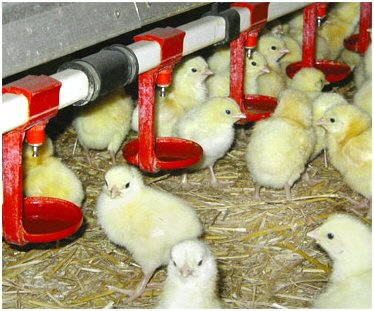Project - New methods for Breaking the Routes of Infection in the Danish Poultry Production
Chicken and Hen Infection Protection (CHIP)
Project start January 2008. Expected completion December 2012.
The project is completed.
The objective of the innovation consortium, CHIP, is to reduce infections in poultry during primary production, thereby improving the economy, animal welfare and impact on environment and health. With partners from DHI, Agrotech (now Danish Technological Institute), UoC-life and various other companies, the Danish Technological Institute will develop solutions which can break the routes of transmission.
The Danish Technological Institute will focus on the microbiological aspects and contribute to new development in areas such as hygienic design, cleaning and disinfection, plus test the application of new nanotech surfaces with bacteriostatic or bacteriocidal properties. The project will result in new knowledge, new technical solutions and product innovation in clinical and subclinical infections, as well as broiler and consumption egg production in Denmark.

Project Objectives
- Identify hotspots for biofilm and bacteria transfer.
- Optimising cleansing procedures in poultry enclosures.
- Developing new materials and surfaces for the enclosures.
- Break the bacterial routes of infection in the enclosures.
- Increase the yield of the Danish poultry production.
Participants
- DHI www.dhigroup.com
- UoC Life www.life.ku.dk
- The National Centre, Poultry www.lr.dk
- The Danish Poultrymeat Association www.danskfjerkrae.dk
- Triova ApS www.triova.dk
- TCnano ApS www.tcnano.com
- Brenntag Nordic A/S www.brenntag.com
- BornPoultry A/S
- Danæg A/S www.danaeg.dk
- DLG A.m.b.A. www.dlg.dk
Activities
The CHIP project is built around 4 main projects: 1 research project and 3 technology projects.
The research project describes the pathogenic bacteria, found in the within the enclosure, and how these are spread in an outbreak.
Technology project 1 looks at new possibilities for optimising hygiene.
Technology project 2 looks at new possibilities in the areas of management and operation.
Technology project 3 collects data and converts it into models of the spread of infection within the enclosure.